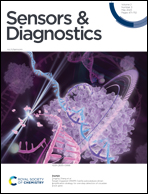All-in-one terahertz taste sensor: integrated electronic and bioelectronic tongues
Abstract
Taste sensors, also known as electronic tongues or bioelectronic tongues, are designed to evaluate food and beverages, as well as for medical diagnostics. These devices mimic the ability of the human tongue to detect and identify different tastes in liquid samples, such as sweet, sour, salty, bitter, and umami. In this study, a novel all-in-one terahertz taste sensor was proposed, which differs from traditional electrochemical approaches. This sensor utilizes terahertz technology for imaging and sensing chemical reactions on the terahertz semiconductor emitter surface. The surface can be functionalized with ion-sensitive membranes, proteins, DNA aptamers, and organic receptors, enabling the detection of various substances, such as solution pH, physiological ions, sugars, toxic chemicals, drugs, and explosives. Terahertz taste sensors offer several advantages, including being label-free, high sensitivity and selectivity, rapid response, minimal sample consumption, and the ability to detect non-charged chemical substances. By integrating multiple receptors or sensing materials on a single chip, the all-in-one terahertz taste sensor has significant potential for future taste substance detection, nutrition evaluation, metabolite and drug monitoring, and biomarker sensing.

- This article is part of the themed collection: Sensors for Healthy Living


 Please wait while we load your content...
Please wait while we load your content...